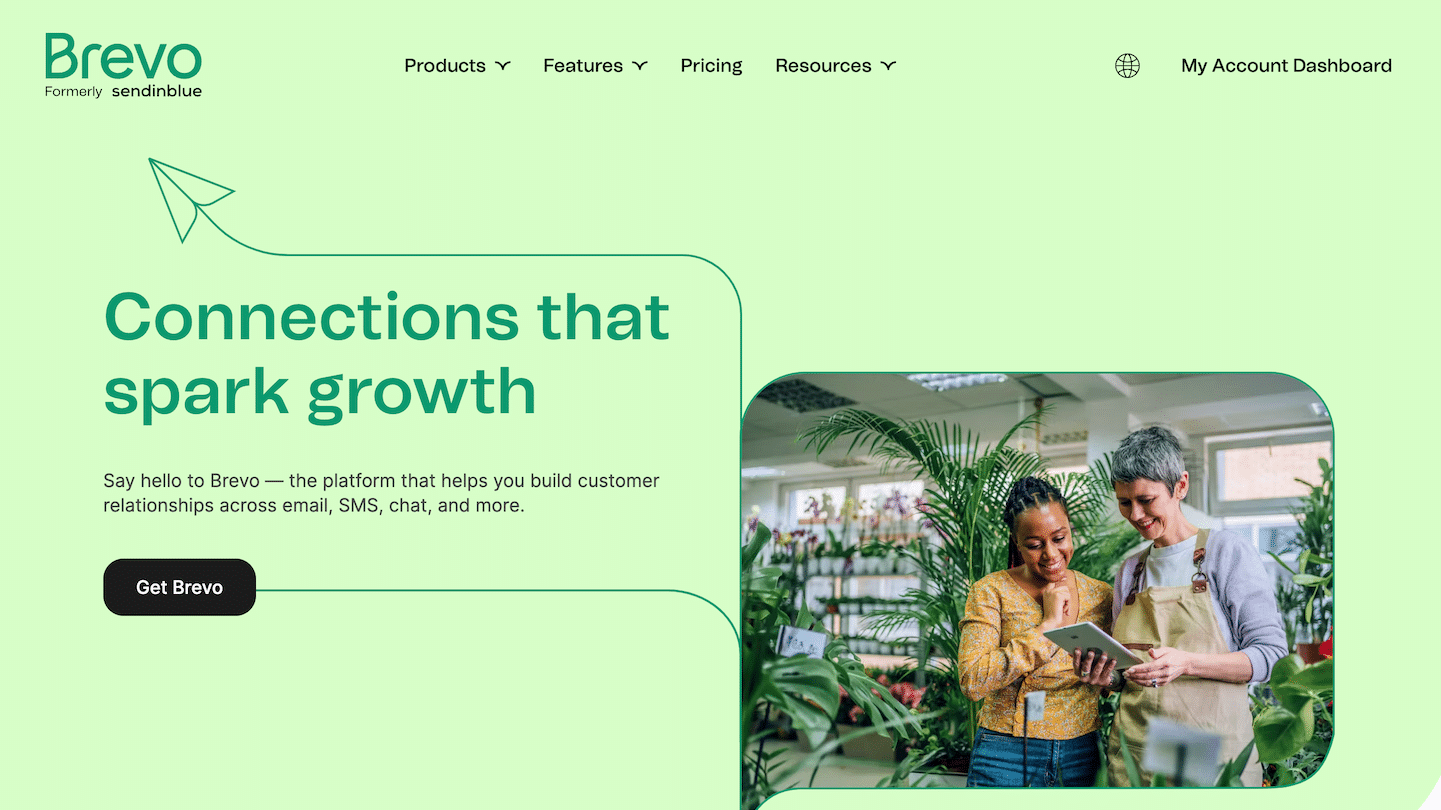Content marketing is not necessarily a (very) long-term investment. On the contrary, it can be quite simple to generate leads quickly in B2B.
In this article, we present 7 examples of content marketing campaigns that are relatively easy to execute and that allow you to quickly capture qualified leads.
They were ordered from the simplest to implement to the most complicated.
Sommaire
Example 1: Compare your product to the competition
It is about creating content by comparing your product to that of a competitor. Comparative content is targeted at product-aware customers and gives you the opportunity to showcase your product against a competitor’s.
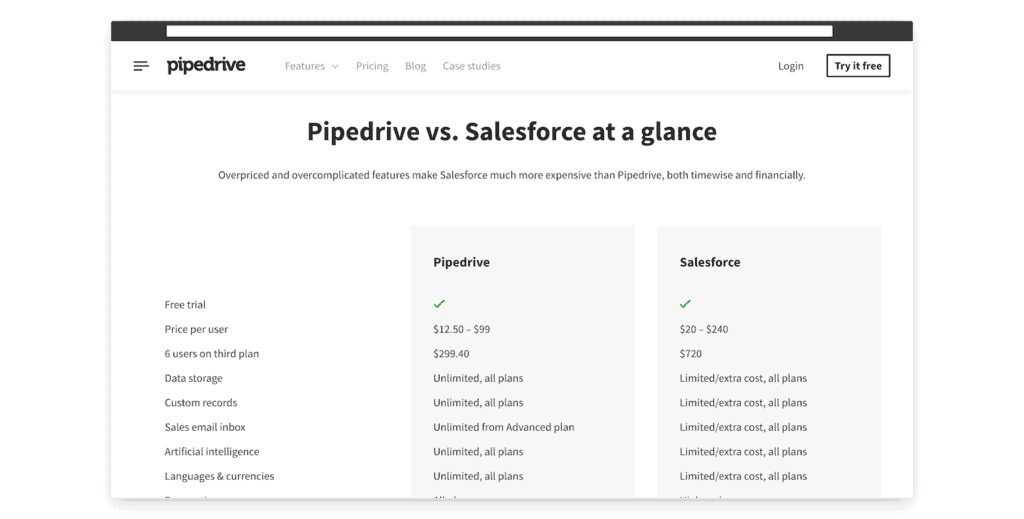
Example 2: Generate detailed positive reviews of your product
Product review content is for solution-oriented customers. When you create content that reviews a particular product or application, you can tell people how it is the best of its kind in the market.
Here’s an effective way to set up this type of content:
- 1. Type into Google the 2 or 3 keywords closest to the need your product meets. Retrieve the top 10 blogs positioned on these keywords with Linkclump.
- 2. Contact 20 bloggers who are relevant to your niche. Their traffic doesn’t matter, it’s the authority of their site that matters. Use tools like Ahrefs, SEMRush or Moz to evaluate this.
- 3. Ask everyone to publish an article about your product. Everyone will respond with a price (except for some pure content ultras who prefer to sell banners or other stuff that has no value).
- 4. Choose the top 3 price/domain authority ratio.
- 5. In 1 month, type your brand name in Google: you will get 3 results that support you, with a detailed study of your product.
To go further: if your product lends itself to it, and if you wish, you can encourage these bloggers to talk more about you on their sites with an affiliate program.
Don’t just work on performance. The good ones will refuse and you will waste a lot of time convincing the bad ones. In the best case, you’ll get bad content that will never be seen, and in the worst case, you’ll only get blind thieves looking to get paid on your brand without generating visibility or helping conversion, or even scams (it’s quite easy to fool an affiliate platform).
Example 3: Case studies or customer reviews
Case studies are present in the content strategies of almost every B2B company. They show how your product helped a customer overcome a specific challenge or achieve a certain result.
Therefore, this type of content can target both product-aware and solution-aware customers.
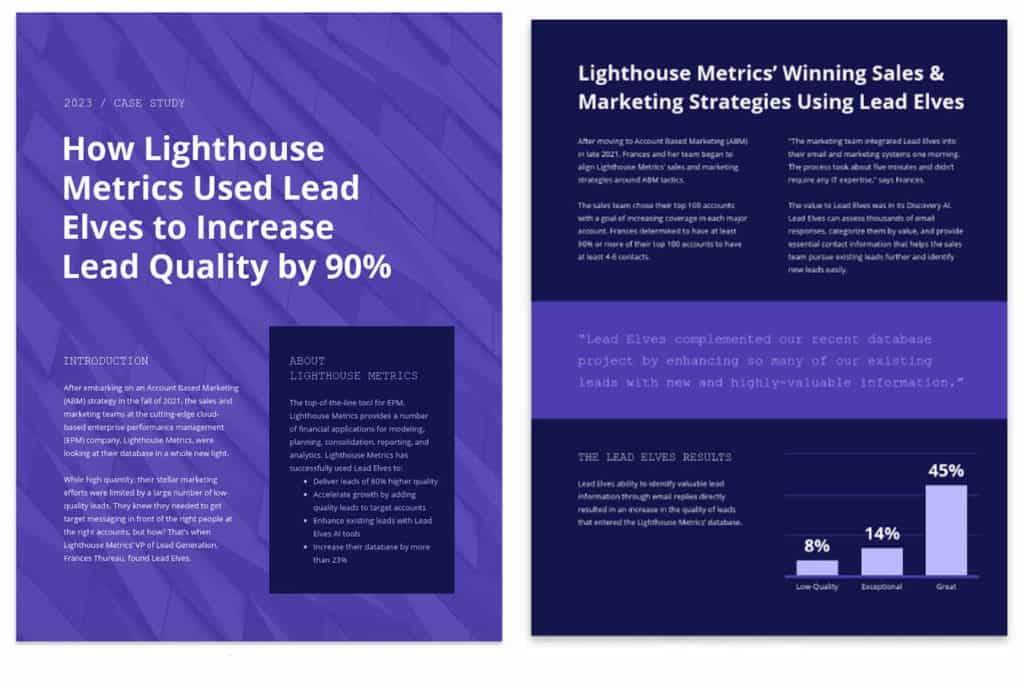
The case studies :
- Help product-aware customers compare your results with those of the competition.
- Help problem-solving clients understand how you work and how you can solve their problems.
The case studies should show how you can achieve the desired results. You can even set up mailings to existing prospects that show them case studies relevant to their needs. The problem with case studies is that they are very complicated content to create:
- You need the client’s agreement, ideally with permission to include figures and something a bit more interesting than three empty testimonials
- You need to have an excellent knowledge of the value you generate for your customers, and of your customers’ business issues
- You need to illustrate and prepare a synthetic and convincing document, often with a more complex layout than a simple landing page.
Example 4: The highly detailed case studies

Highly detailed case studies help clients become aware of solutions. As they look at solutions in depth, they need to see your thought process in detail.
Highly detailed case studies are very specific accounts of how your company solves a customer’s problem. In this way, it gives potential clients an insight into your company’s thought process and shows them your strategies at a high level.
Example 5: The case studies… of others
You have just seen how case studies can generate income. But what if you have not yet worked with clients? In that case, you can ask influencers about the outcomes your clients want.
At this point, you’re probably thinking, “Since I didn’t get these results, why would this content generate leads?”
Well, for two reasons:
1. You associate your brand with the result. Yes, you didn’t get the result. But by interviewing others, people will rightly assume that you understand the process better. It’s an idea quite similar to partnerships to create a webinar.
2. You can add your thought leadership to the content by sharing your own perspective.
Example 6: The lilies
To create a “best of” article, you should make a list of your competitors and briefly review them. You can put your product or company first on the list, but remember to be honest in your comments.
Here again, I see all the “But we’re not going to advertise our competitors after all”.
OK, let your competitors and a few bloggers SEO on the higher intent keywords and keep buying your clicks from Google.
Or you can mourn your loss and move on. You can’t hide your competitors from your prospects in 2022.
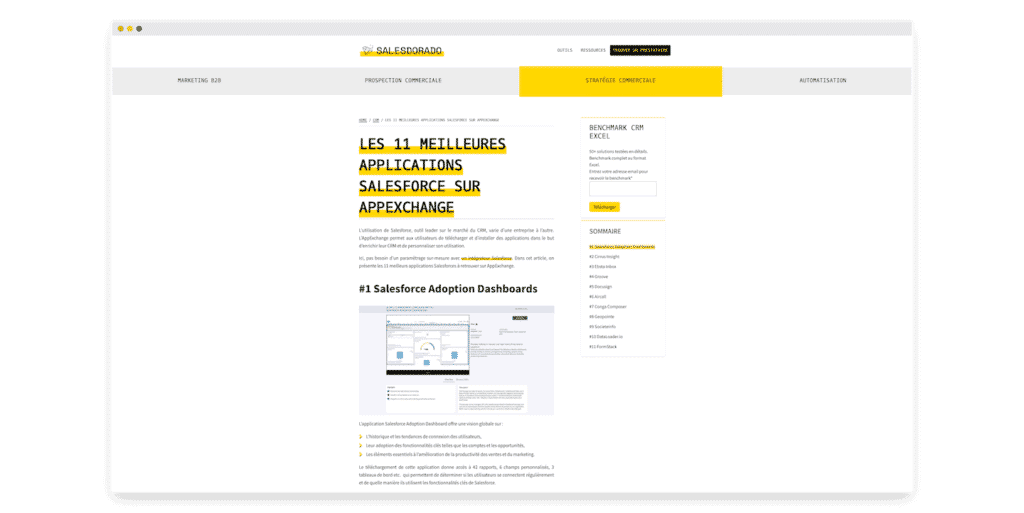
Writing a listicle yourself is good, but you can go even further. It’s quite easy to get some bloggers who already have good SEO positions on Google to talk about you in their content. To do this, make lists of blogs that have already positioned articles on the keywords you are interested in, and contact them very openly to ask if they would be open to adding you to these articles. If you don’t already know, we recommend linkclump (free) to build these lists quickly.
Example 7: Thematic guides
Thematic guides can be used to answer the most frequently asked questions from customers. They can take the form of a homepage with a lot of information and a call-to-action button that will capture leads.
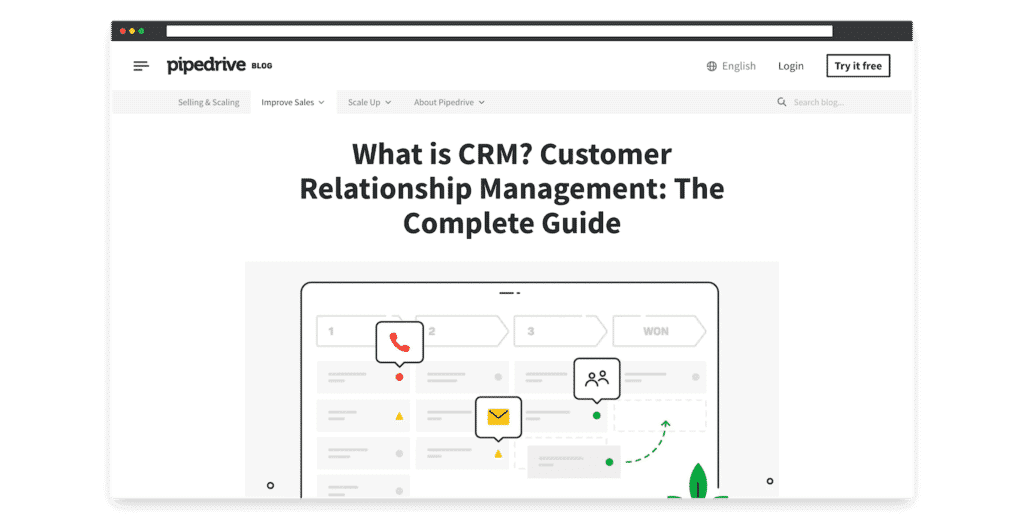
It is a relatively simple approach to execute when you know a subject well, since you master the different dimensions. But it is, by far, the most expensive approach to content marketing, since what is valued is completeness.
You need to cover a topic in its entirety to provide value, as you are simply gathering information that already exists. This is what the content marketing gurus call a “pillar page”. Conceptually it’s fine, but you shouldn’t just do pillar pages, your inbound marketing agency would be delighted, but you a little less so.
Answer The People is a free and very practical tool for creating your own thematic guide: it is a generator of questions and associations of ideas on a given theme. In a few seconds, it identifies a whole series of questions linked to a key word or expression.
Stages of the buying journey and relevance of content marketing
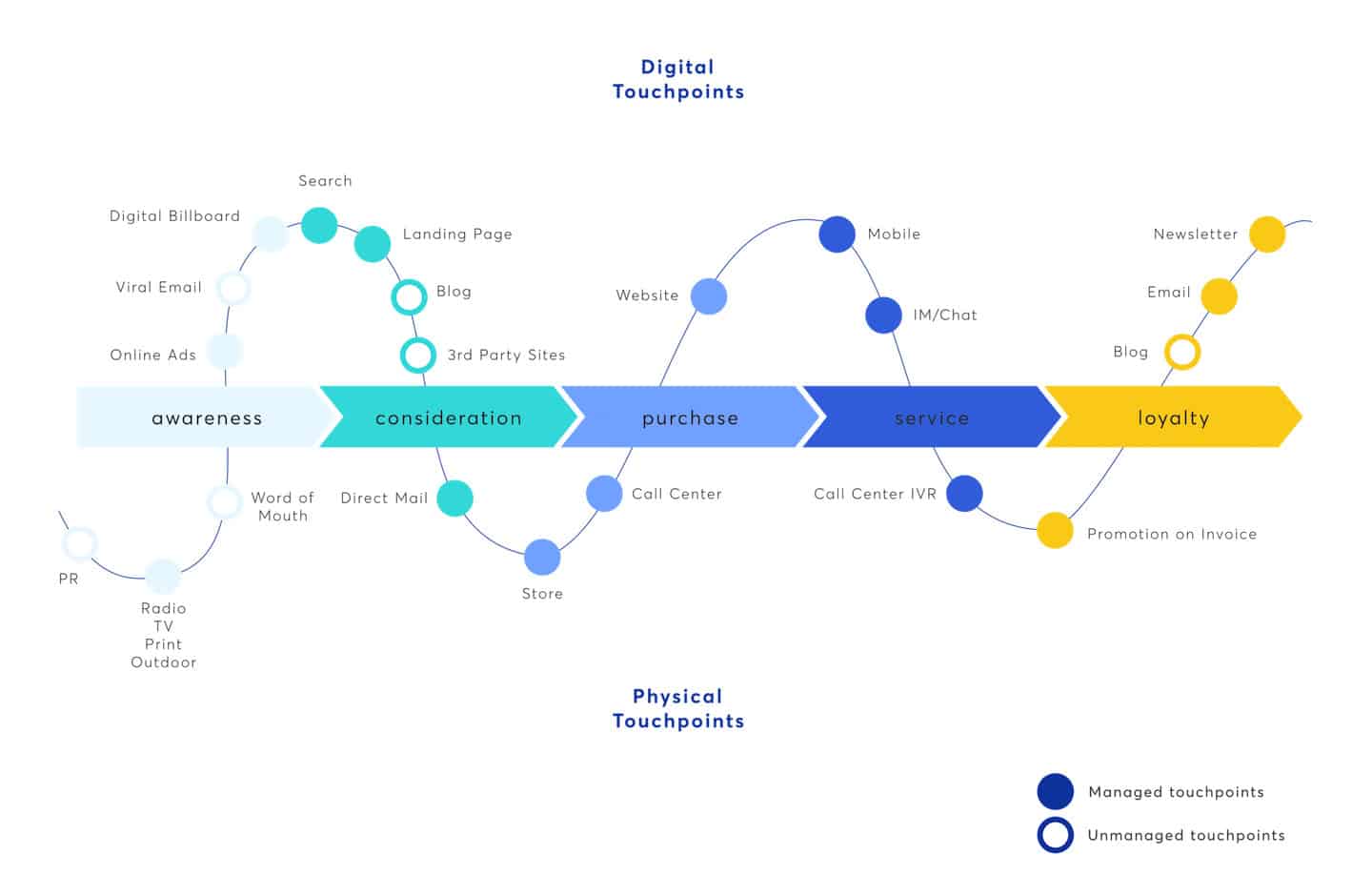
To go further, a word on the stages of the buying journey. Content marketing is often presented as marketing to those who are still very far down the buying path… Wrong! Here we focus on the stages close to conversion. Simply because that’s where the money is.
The strength of content marketing is that you can target intentions quite precisely. Depending on the keywords targeted and the customer’s stage of maturity, the type of marketing to be favoured is different
#1 Convert the most sophisticated prospects
When your prospect knows your product and recognises the need for it, you are almost entirely in the business of reassurance and social proof. Case studies, customer reviews, etc. are preferred. All content that will allow you to finish convincing the visitor.
You might think that SEO doesn’t matter and that you are 100% brand content. In reality it’s a bit more complicated than that. Some keywords show a very strong, immediate intention, and an important maturity, and the major stake in marketing is to be present. Ideally first.
Attacking these topics therefore not only converts your existing pipeline, but potentially also acquires very mature leads, very close to conversion. The grail.
#2 Convincing product-aware prospects
When your prospect knows that your product exists, but is not sure whether it is suitable or better than your competitors’… The kind of lead you like because you just have to convince them: focus on comparisons and partnerships with influential blogs or media to position yourself against the competition.
The aim here is not so much to show that you are a solution, but rather that you are the best solution. To all those who don’t mention any of their competitors in a somewhat dogmatic way in these types of content: change your mind.
Obviously, you don’t want to give ideas to a visitor who is at the very beginning of the journey. But at the end of the journey, if you don’t dare to compare yourself to others, your leads will choose one of those who dare.
3. Prospects aware of the solutions
Your prospect is well aware of his difficulties and knows the solution he needs. However, he may not know your product and how it can solve his problem. Specifically, they don’t yet know the key word. The need has not yet been formulated in a transactional way.
To caricature, it is those who type in “customer relations” and “sales pipeline” rather than CRM software.
If there is a real opportunity to convince these customers, you will also have a lot of education to do. Depending on your product and your competitive environment, it may be better to leave this job to others.
In any case, start by being concrete on steps 1 and 2 of the buying journey before attacking generic stuff with rotten conversion rates. If only because once they’ve found the keyword that fits their need, people have a tendency to type it into Google. If you give the keyword, but you’re not there afterwards you’ve lost everything.
4. Problem-aware prospects
Your prospect recognises their difficulties but does not know the solution, how they can identify the problems they face or their options for solving them.
Getting the customer to conceptualise their problem, consider solutions, and choose yours will cost you a lot of money, and it is rather easier to focus on prospects who are already further down the conversion funnel (closer to conversion).
Overall, it’s a real rich person’s problem. You attack these subjects once you dominate everywhere else and get a bit bored.
5. Uninformed prospects
Your prospect has problems but is not aware of them. Think of this customer as someone who has an illness but has not yet been diagnosed by a doctor.
Paradoxically, it is this kind of prospect that is most often mentioned when talking about content marketing.
However, this is more like market education than marketing. While long-term marketing can be effective (think of Blablacar), it is very expensive and takes a long time.
In this article, we will instead provide you with examples of content marketing that can quickly capture qualified leads. We’ll leave the market education and “demand creation” to the PhDs and .

